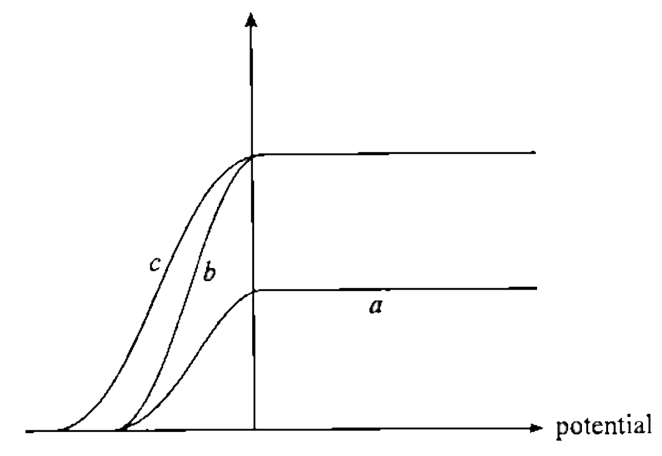In a photoelectric experiment anode potential is ploted against plate current.

A and B will have same intensities while B and C will have different frequencies
B and C will have different intensities while A and B will have different frequencies.
A and B will have different intensities while B and C will have equal frequencies.
B and C will have equal intensities while A and B will have same frequencies.
The correct Answer is:D
Step by step video, text & image solution for In a photoelectric experiment anode potential is ploted against plate current. by Physics experts to help you in doubts & scoring excellent marks in Class 12 exams.
Topper's Solved these Questions
- BOOK - NARAYNACHAPTER - DUAL NATUREEXERCISE - LEVEL-I (H.W)7videos
DUAL NATURE
- BOOK - NARAYNACHAPTER - DUAL NATURE OF RADIATION AND MATTEREXERCISE - ASSERTION AND REASON15videos
DUAL NATURE OF RADIATION AND MATTER
- BOOK - NARAYNACHAPTER - ELECTRIC CHARGES AND FIELDSEXERCISE - EXERCISE -443videos
ELECTRIC CHARGES AND FIELDS
Similar Questions
In a photoelectric experiment, two metal pairs plates A and B are used for a given light intensity I and frequency f. work function of metal B is more than that of A. The correct variation of stopping potential difference versus frequency is given by:
View SolutionIn photoelectric experiment the plot between anode potential and photoelectric current is shown in figure 2.3.1. Which of the following is correct:
 View Solution
View Solution
Knowledge Check
- Question 1 - Select One
In a photoelectric experiment anode potential is plotted against plate current.Then
 AA and B will have different intensities while B and C will have different frequencies.BB and C will have different intensities while A and C will have different frequencies.CA and B will have different intensities while A and C will have different frequencies.DA and B will have equal intensities while B and C will have different frequencies.
AA and B will have different intensities while B and C will have different frequencies.BB and C will have different intensities while A and C will have different frequencies.CA and B will have different intensities while A and C will have different frequencies.DA and B will have equal intensities while B and C will have different frequencies. - Question 2 - Select One
In a photoelectric experiment anode potential is ploted againest plate currect.
 AA and B will have different intensities while B and C will have different frequenciesBB and C will have different intensities while A and C will have different frequenciesCA and B will have different intensities while A and C will have different frequenciesDB and B will have equal intensities while A and B will have different frequencies
AA and B will have different intensities while B and C will have different frequenciesBB and C will have different intensities while A and C will have different frequenciesCA and B will have different intensities while A and C will have different frequenciesDB and B will have equal intensities while A and B will have different frequencies - Question 3 - Select One
In a photoelectric experiment, if stopping potential is applied, then photocurrent becomes zero. This means that:
Athe emission of photoelectrons is stoppedBthe photoelectrons are emitted but are reabsorbed by the emitter metalCthe photoelectrons are accumulated near the collector plateDthe photoelectrons are dispersed from the sides of the apparatus.
If in a photoelectric experiment, the stopping potential is 1.5 volts, what is the maximum kinetic energy of a photoelectrons?
View SolutionIn a photoelectric experiment, a student plotted the graph of stopping potential (Vs) against the frequency of incident radiation (v). But he could not write the unit of the slope of the graph. What is the corrent unit ?
View SolutionIn a photoelectric experiment the stopping potential for the incident light of wavelength 4000Å is 2 volt. If the wavelength be changed to 3000 Å, the stopping potential will be
View SolutionIn photoelectric effect, stopping potential depends on
View SolutionIn photoelectric effect, stopping potential depends on
View Solution

